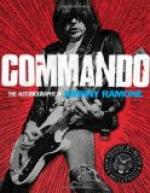We went on a few hundred paces over pretty level ground, and then looked down upon the camp at the foot of the mountain, which consisted of several hundreds of tents and many waggons. Some of these waggons were inspanned, some were already retreating, but most of them were not yet inspanned. The camp lay on the grounds and by the fields of a deserted farm.
Afterwards I heard that Commandant Badenhorst, of Pretoria (who had attacked the enemy before our arrival, at the foot of the mountain, and so suffered the greatest loss), was already retreating, but, hearing the fighting on the mountain, had renewed his attack.
The enemy could not stand the fire that we opened upon them, and had to retreat from the camp in the direction of Commandonek. The inevitable consequence was that the troops on the west, opposite De la Rey, had to retreat hurriedly so as not to be cut off by the wedge that was forcing its way along the mountains into the camp. They were far beyond reach of our bullets. Where De la Rey’s cannon were, and why they did not make themselves heard, I do not know. Neither do I know why General Smuts did not cut off the retreat of the enemy to the south-east. They had placed a few cannon to our left in the valley, and bombarded us fiercely on the mountain without much result. The balls of a small Maxim flew past us with a hissing sound and hindered us in our aim.
The waggons that were inspanned fled in the direction of Commandonek, and halted in the valley at a respectful distance from us. Although the camp appeared to be almost deserted, a continual firing was heard below us. I could not make out from where it came until I suddenly discovered several small troops of horsemen who galloped at intervals from behind a wall in the shade of some trees. They were in all probability left there as cover for the waggons. The few shots we fired at them missed their aim. We saw De la Rey’s burghers capture a large herd of cattle.
While Malherbe and I were peering from behind our hurriedly erected entrenchment, and occasionally firing a few shots, I discovered four or five brave khakies busy dragging along an ammunition waggon, or a gun; from such a distance we could not distinguish which. We fired at them with a sight of 800 paces, but did not hit them, as the horizontal distance to the camp was not more than 400 paces, and we should have used a sight of 600 paces, but the height of the mountain was very misleading. Immediately afterwards a span of mules came in the direction of the supposed gun, so Malherbe and I retreated as fast as we could, to find a better cover more to the left. It is strange how in a battle one always has an idea that all the threatened danger is aimed specially at one’s self.
We had to be on the look-out not to fire at our own people, some of whom were already in the camp. My brother, Malherbe, and I went to the narrow kloof that I have already mentioned, after a fruitless search for our horses, which had meanwhile been taken to the entrance of the kloof, and I heard from my brother that our brave General had been wounded in the leg by a shell. During the search for our horses we had noticed a long dust-cloud at the end of Kromriverskloof, near Buffelspoort, moving from Rustenburg in the direction of Commandonek—in all probability reinforcements for the enemy, arriving too late.




